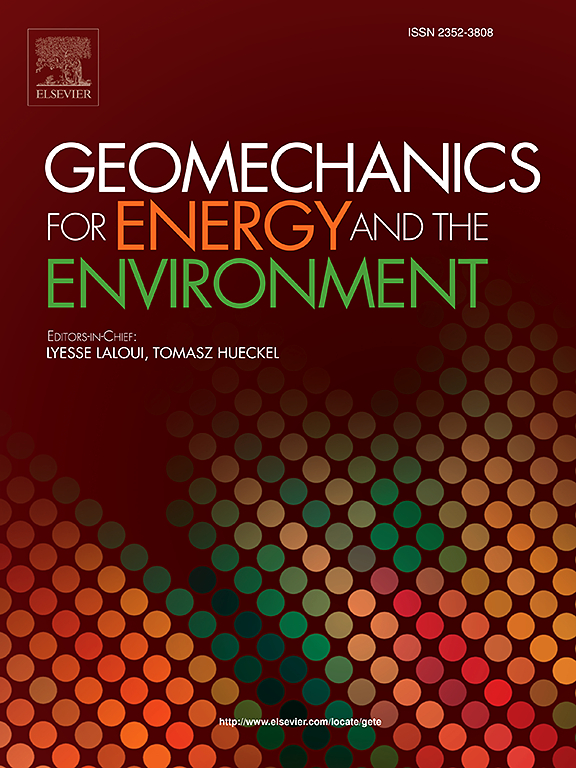应用环境友好改性剂对野火后土壤疏水性和坡面侵蚀进行修复
IF 3.7
2区 工程技术
Q3 ENERGY & FUELS
引用次数: 0
摘要
本文研究了环境友好型修复材料和技术在火灾后降雨引起的烧毁斜坡土壤侵蚀中的应用。在野火期间,植被和有机物燃烧并释放出土壤颗粒上的疏水化学物质。疏水性降低了水的入渗速率,延长了润湿过程,增加了侵蚀,并在流域造成严重的泥石流。这项比较研究提出了通过环境友好型生物聚合物和表面活性剂来减轻疏水效应的最有效方法。实验技术评估了水滴在处理过和未处理过的土壤中的渗透动力学、下坡水滴的流动性和侵蚀。水滴接触角的测量表明,生物聚合物黄原胶(XG)略微降低了疏水性,而表面活性剂异硫代椰子酸钠(SCI)则降低了疏水性的千分之一。此外,在低斜度和中斜度的边坡上,SCI可以减少坡面侵蚀。在正常情况下,由于砂体的高渗透率,其渗透速率(IR)非常快;然而,表面疏水性显著降低IR。人工处理的极度防水的混合砂样品的结果显示IR降低了6个数量级。然后,在XG和SCI修饰剂处理后,XG处理后的IR增加了一个数量级,SCI处理后的IR增加了四个数量级。虽然XG具有可湿性和吸水性,但它在沙粒之间形成的结壳和网阻碍了水的有效渗透。在所有情况下,温和斜坡的红外率与水平表面相似;然而,陡坡降低了处理过的疏水性土壤的IR,因为陡坡允许相对于渗透速度更快的水下坡运动。本文章由计算机程序翻译,如有差异,请以英文原文为准。
Post-wildfire soil hydrophobicity and slope erosion remediation by applying environmentally friendly modifiers
This paper investigates the use of environmentally friendly remediation materials and techniques for rain-induced post-wildfire soil erosion on burned slopes. During wildfires, vegetation and organic matter combust and release hydrophobic chemicals on soil grains. Hydrophobicity reduces the water infiltration rate, prolongs the wetting process, increases erosion, and causes severe debris flows over watersheds. This comparative study presents the most effective approaches for mitigating hydrophobicity effects through environmentally friendly biopolymers and surfactants. Experimental techniques evaluate the dynamics of water drop penetration into treated and untreated soil, downhill water drop mobility, and erosion. The waterdrop contact angle measurements indicate that biopolymer Xanthan Gum (XG) slightly reduces hydrophobicity, whereas surfactant Sodium Cocoyl Isethionate (SCI) reduces it by a factor of a thousand. In addition, SCI can decrease slope erosion at low-inclined and moderate-inclined slopes. Sands' infiltration rates (IR) are very fast due to high permeability in normal conditions; however, surface hydrophobicity significantly reduces IR. Results from artificially treated extremely water-repellent samples of mixed sand show a six orders of magnitude decrease in IR. Then, after treatments XG and SCI modifiers, the IR increased by an order of magnitude after the XG treatments, and by four orders of magnitude under SCI treatment. Although XG is wettable and attractive to water, the crust and webs it forms between sand particles prevent effective water infiltration. Mild slopes exhibit similar IR rates as horizontal surfaces for all the cases; however, steeper slopes reduce IR for treated hydrophobic soils because they allow for downhill motion of water that is faster relative to the infiltration speed.
求助全文
通过发布文献求助,成功后即可免费获取论文全文。
去求助
来源期刊

Geomechanics for Energy and the Environment
Earth and Planetary Sciences-Geotechnical Engineering and Engineering Geology
CiteScore
5.90
自引率
11.80%
发文量
87
期刊介绍:
The aim of the Journal is to publish research results of the highest quality and of lasting importance on the subject of geomechanics, with the focus on applications to geological energy production and storage, and the interaction of soils and rocks with the natural and engineered environment. Special attention is given to concepts and developments of new energy geotechnologies that comprise intrinsic mechanisms protecting the environment against a potential engineering induced damage, hence warranting sustainable usage of energy resources.
The scope of the journal is broad, including fundamental concepts in geomechanics and mechanics of porous media, the experiments and analysis of novel phenomena and applications. Of special interest are issues resulting from coupling of particular physics, chemistry and biology of external forcings, as well as of pore fluid/gas and minerals to the solid mechanics of the medium skeleton and pore fluid mechanics. The multi-scale and inter-scale interactions between the phenomena and the behavior representations are also of particular interest. Contributions to general theoretical approach to these issues, but of potential reference to geomechanics in its context of energy and the environment are also most welcome.
 求助内容:
求助内容: 应助结果提醒方式:
应助结果提醒方式:


